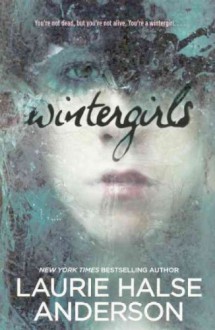

So, I started reading this book in June, ended up getting caught up in other things, including other readings, and I finally just finished it. I actually had to start again from the beginning, but it was worth it.
This graphic novel is written by Art Spiegelman and based on his father's experiences before and during World War II. The book skips back and forth in time between the adult author speaking to his father and the years around World War II. In the illustrations, the Jewish people are represented by mice, the Germans cats, and the Polish people by pigs. This graphic novel is at times touching, at times horrifying, and at times just sad. A definite must-read for anyone interested in this time period.

Noah and Jude are twins, and both very artistically inclined. This book follows the twins through some difficult times. It jumps back and forth between years and alternates between Noah and Jude's viewpoints.
This book deals with a lot of issues that teens might face, including questioning their sexuality, sex, death, divorce, mental health, and more. I didn't love the book, maybe because I don't usually enjoy realistic fiction. I read it for my Young Adult Literature class, and I probably wouldn't have picked it myself. But I am trying to branch out a bit.
Anyway, the book is well written and I can see the appeal it has for young adults. They can easily identify with the characters even if their own situation is a bit different. What bothers me about some of these stories is the romantic relationships. Books like this promote unrealistic expectations about love and relationships. Most of us don't find our "soulmate" (if one even exists), and we don't often experience a love that was "meant to be." Sad I know, but it seems worse to make teens think that this is how love works.

Wow. This book is relentless, intense, and depressing...
That being said, it also seems realistic. It chronicles Lia's descent into anorexia and self-harm. Her best friend was bulemic and has died at the beginning of the book. She tried to call Lia multiple times on the night she died, but Lia didn't answer. The guilt Lia feels contributes to her decline. She has been in and out of treatment and knows how to fool the system. Her mother, father, and stepfather don't know how to reach her or what to do to help her anymore. How do you help someone who is determined to hurt themselves?
This book is a difficult read and not for the faint of heart. I didn't enjoy it at all, but I did learn from it and I do see the value in it. Thus my 3 star review. Anderson describes what Lia looks like and what she does to her body in graphic detail. So, beware.
I think this could be a good book for teens or their parents to read. Teens may see themselves and see hope or realize what could happen to them. Adults can see the pressures that today's teens face on a daily basis. I think books about these issues are important when they show the whole situation in a realistic light. Anderson does an amazing job of getting inside Lia's head and showing us her thought process.

Rose and Windy have been coming to the same beach every summer for years. Rose is a bit older and is starting to change into a young woman while Windy is still a girl. They have a sisterly relationship and enjoy their summers together. Rose is experiencing family strife and trying to figure out who she is as a young woman. Windy is still happy-go-lucky.
This graphic novel is based in summer fun, but there are a lot of serious issues going on here. Rose's parents are dealing with infertility and loss. The young man who works at the local store may have gotten his girlfriend pregnant. The older kids curse and talk about sex. This is not a story for younger readers. I think the appropriate age depends on your individual beliefs, but I would say high school.
I found the hyperness of Windy a bit irritating and I didn't love the book. But I can see that it is well-written and will appeal to many teens and young adults. I read this book for my Young Adult literature class. :)